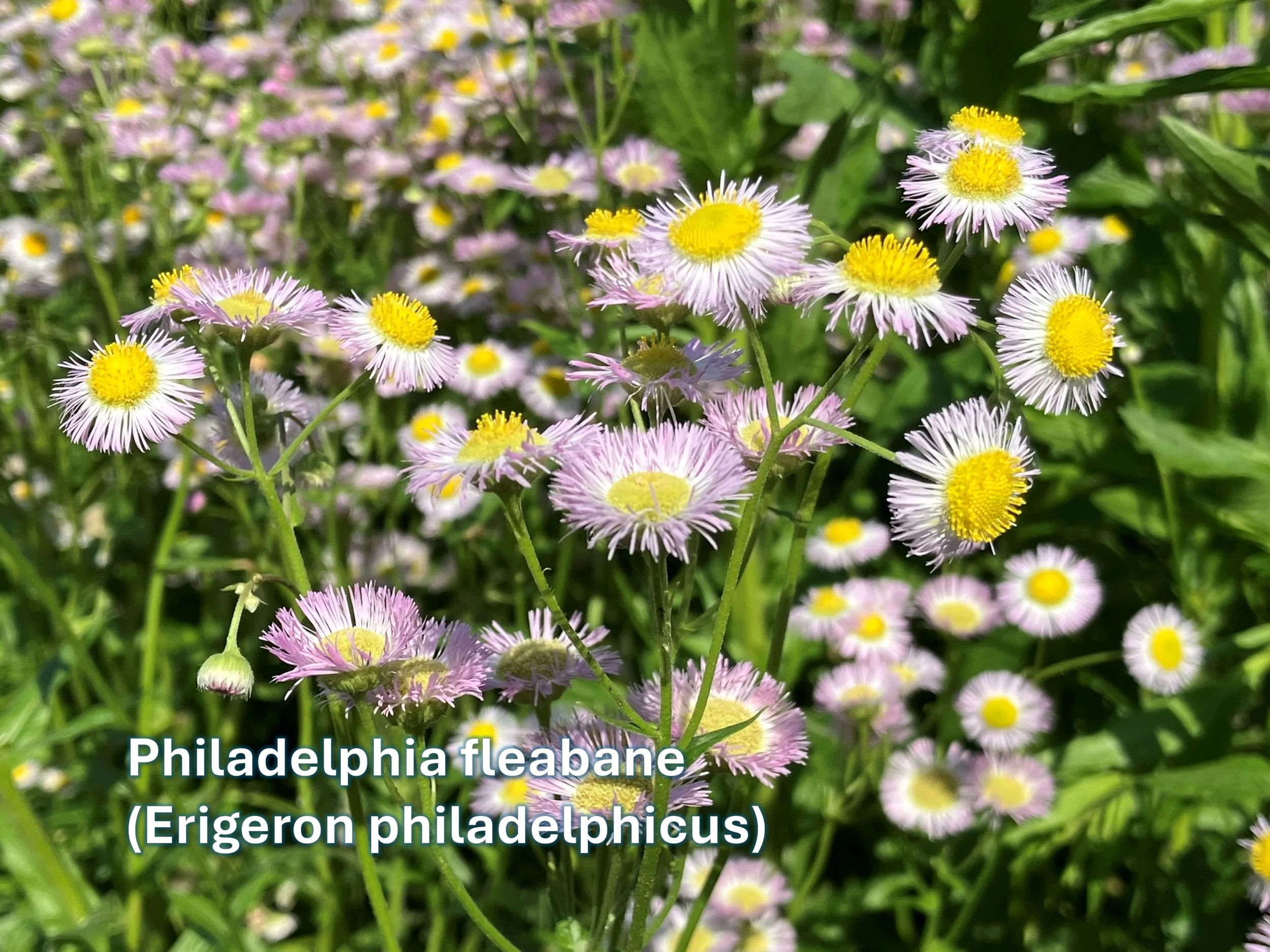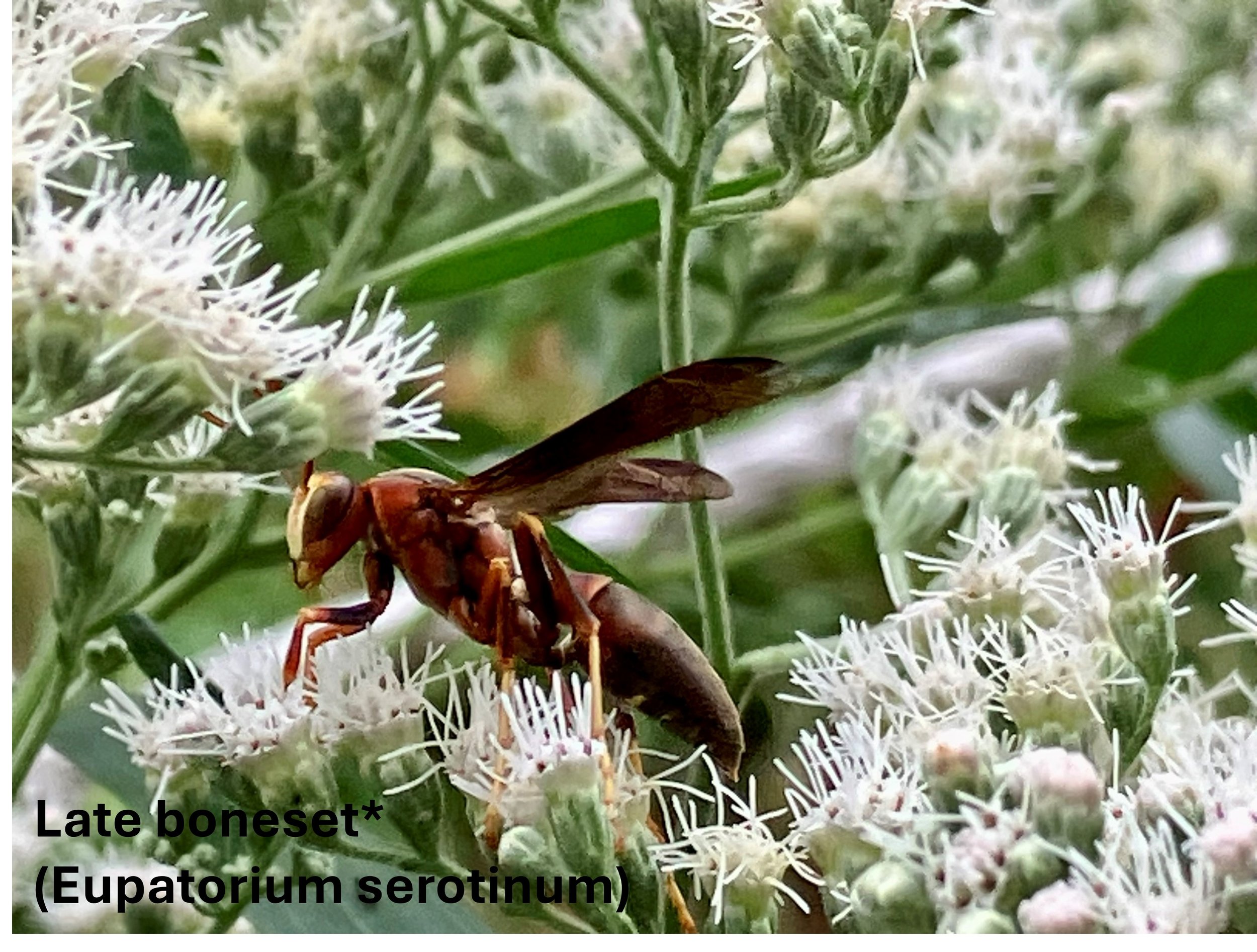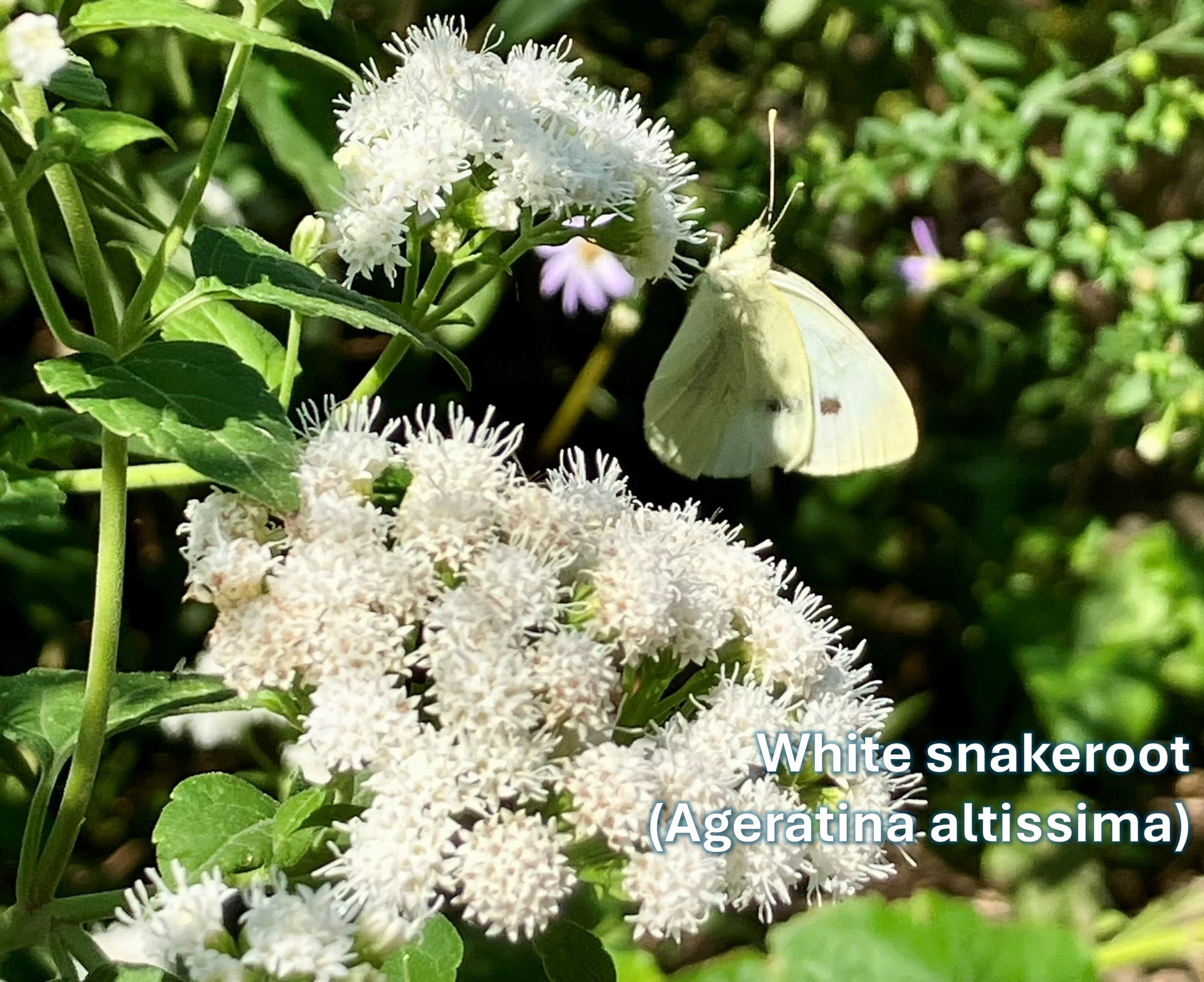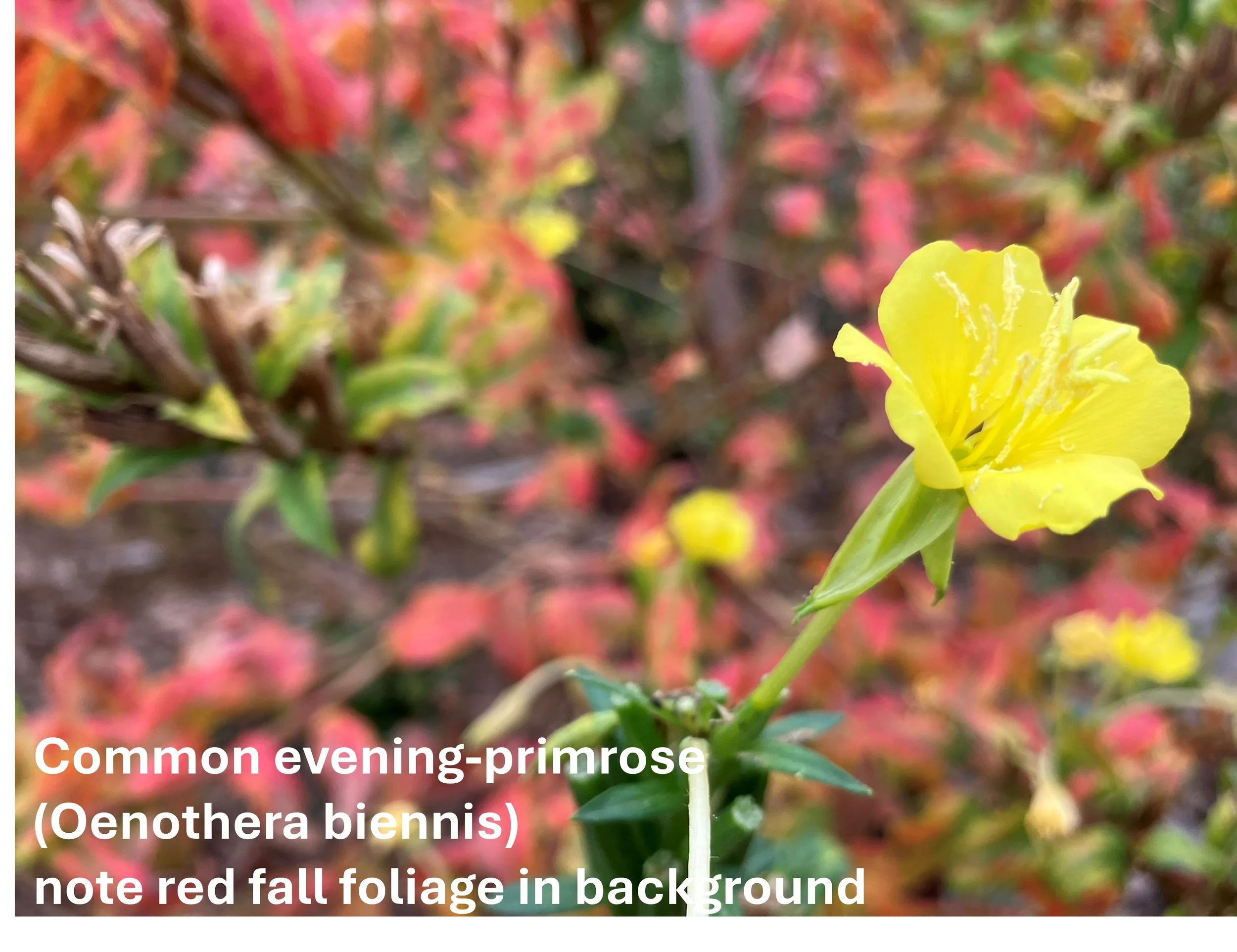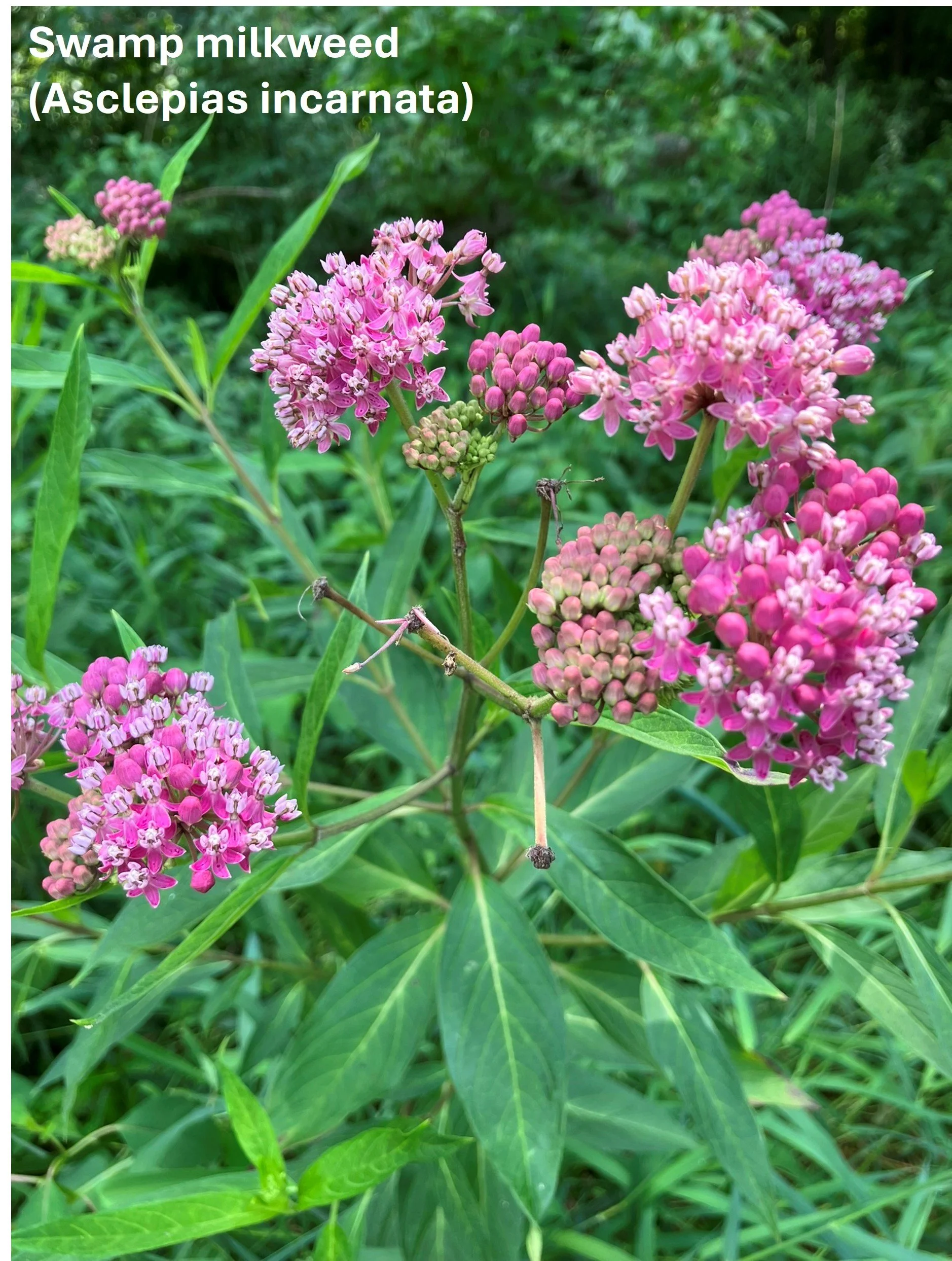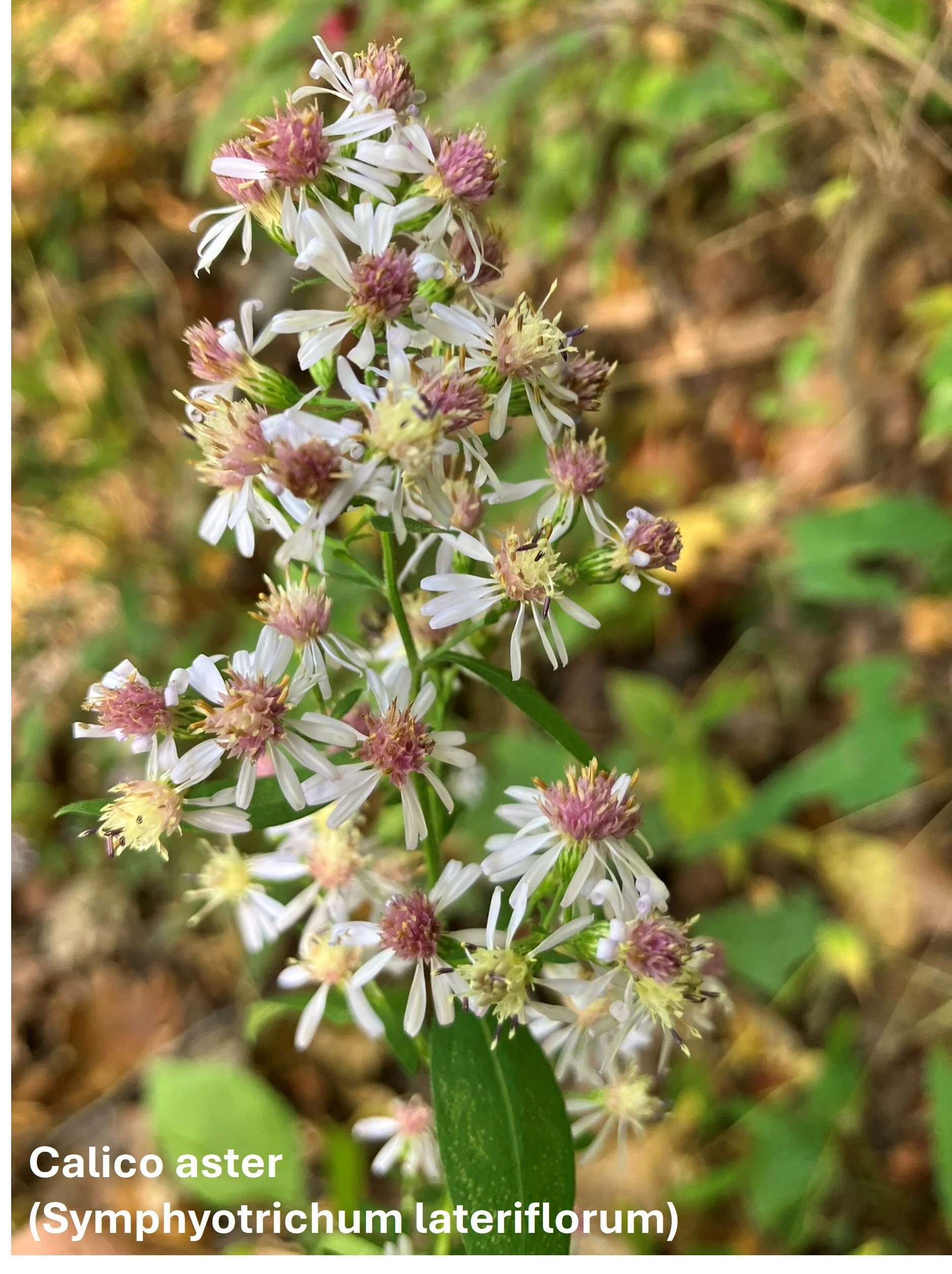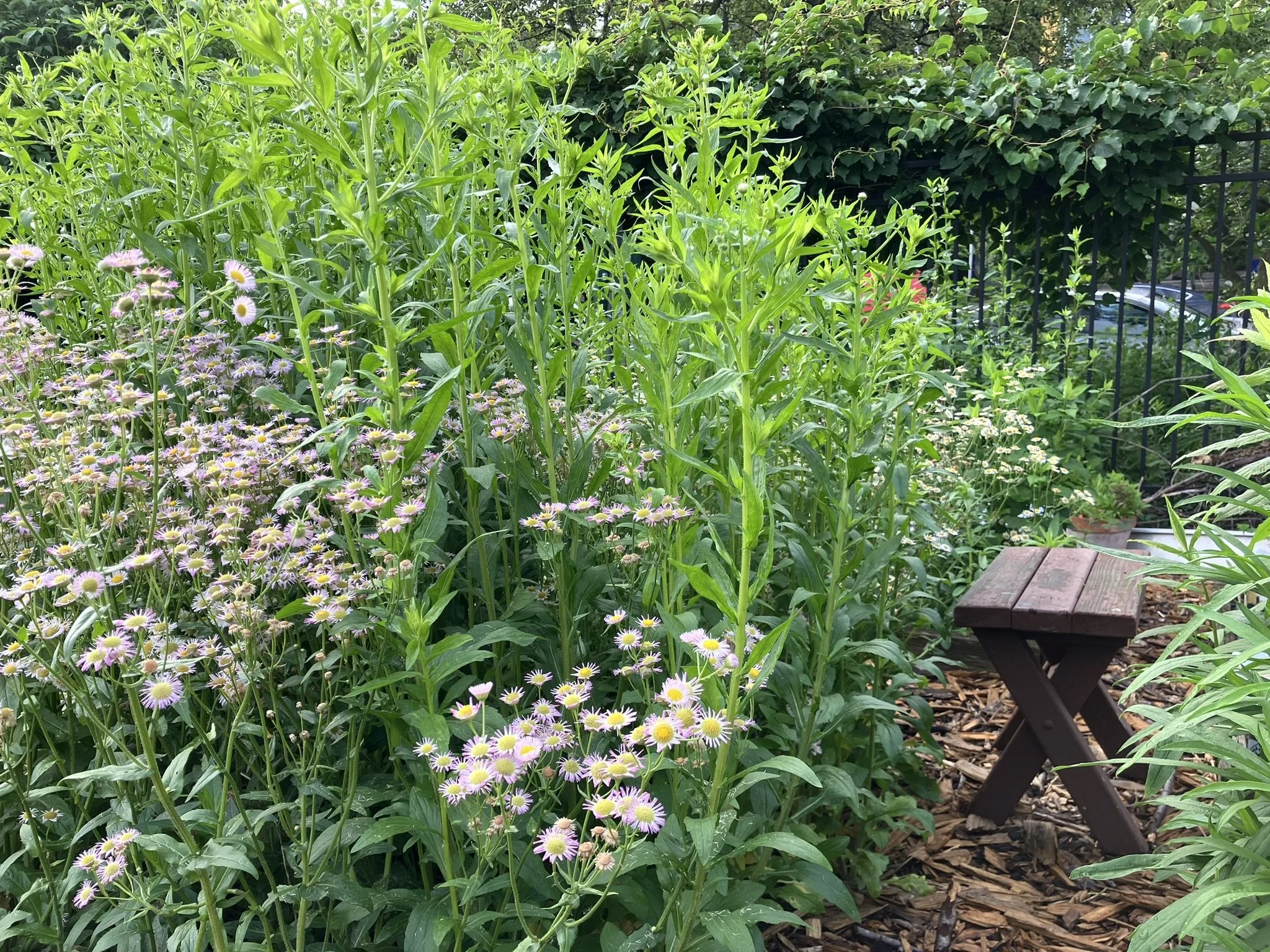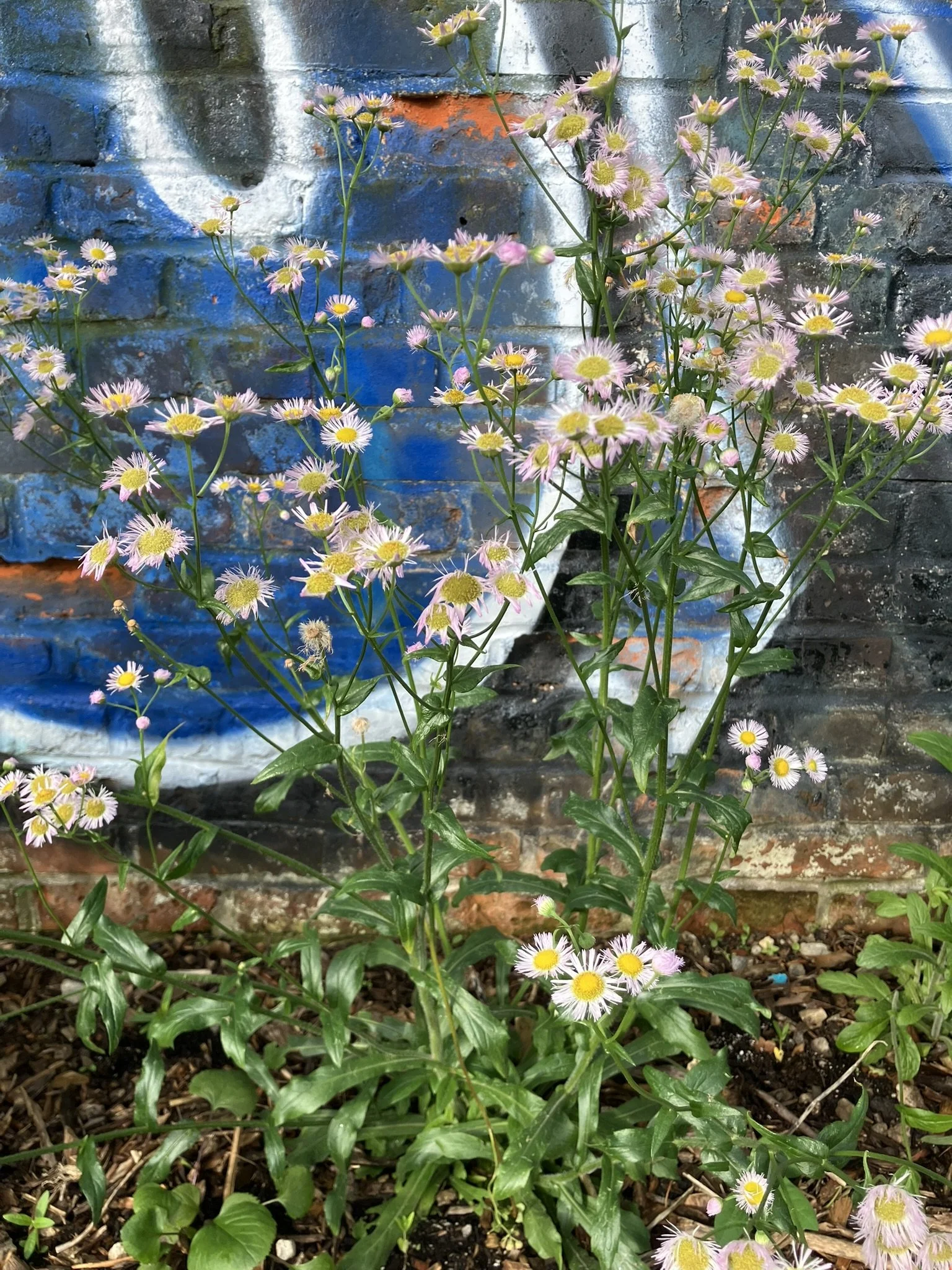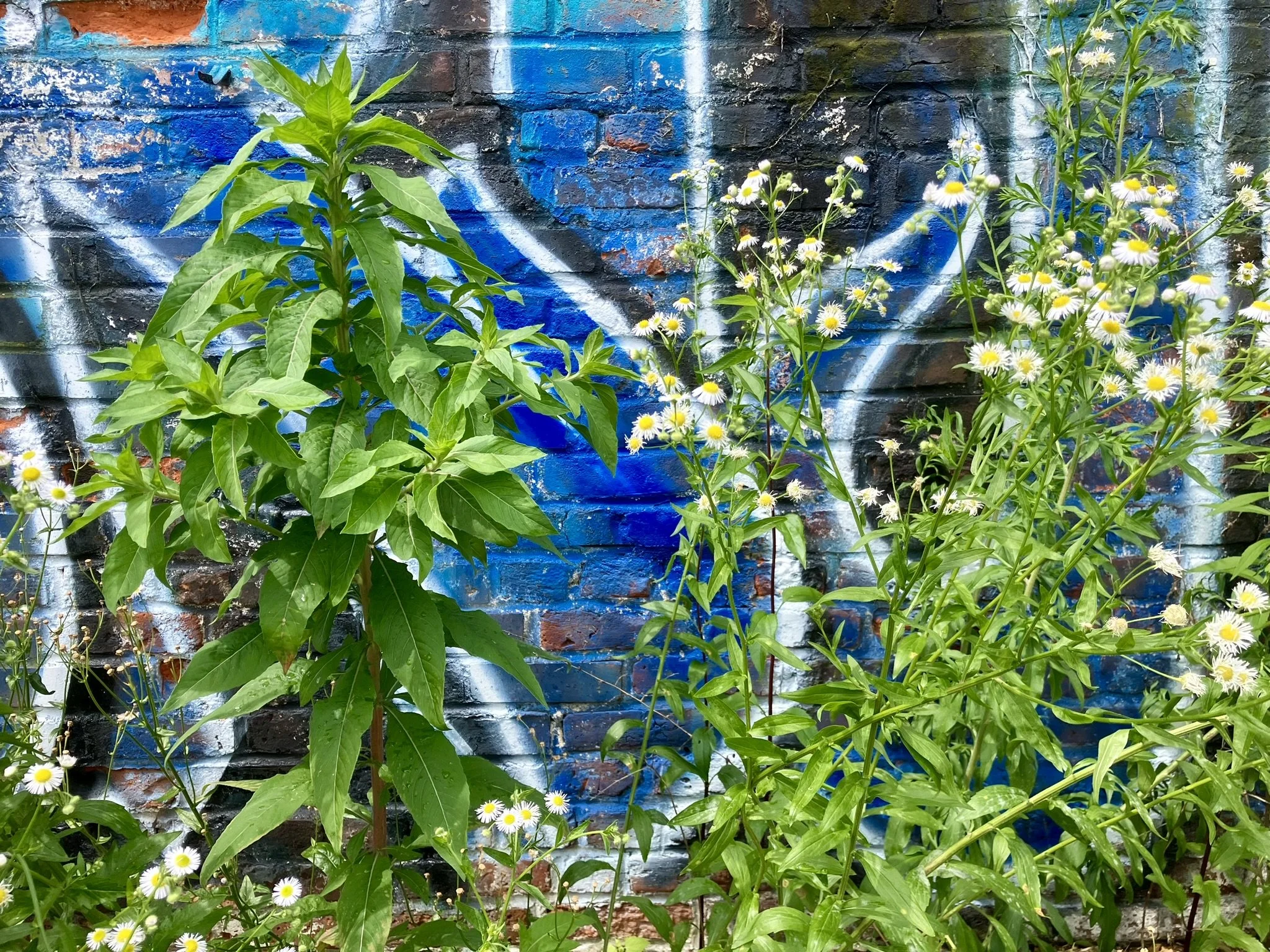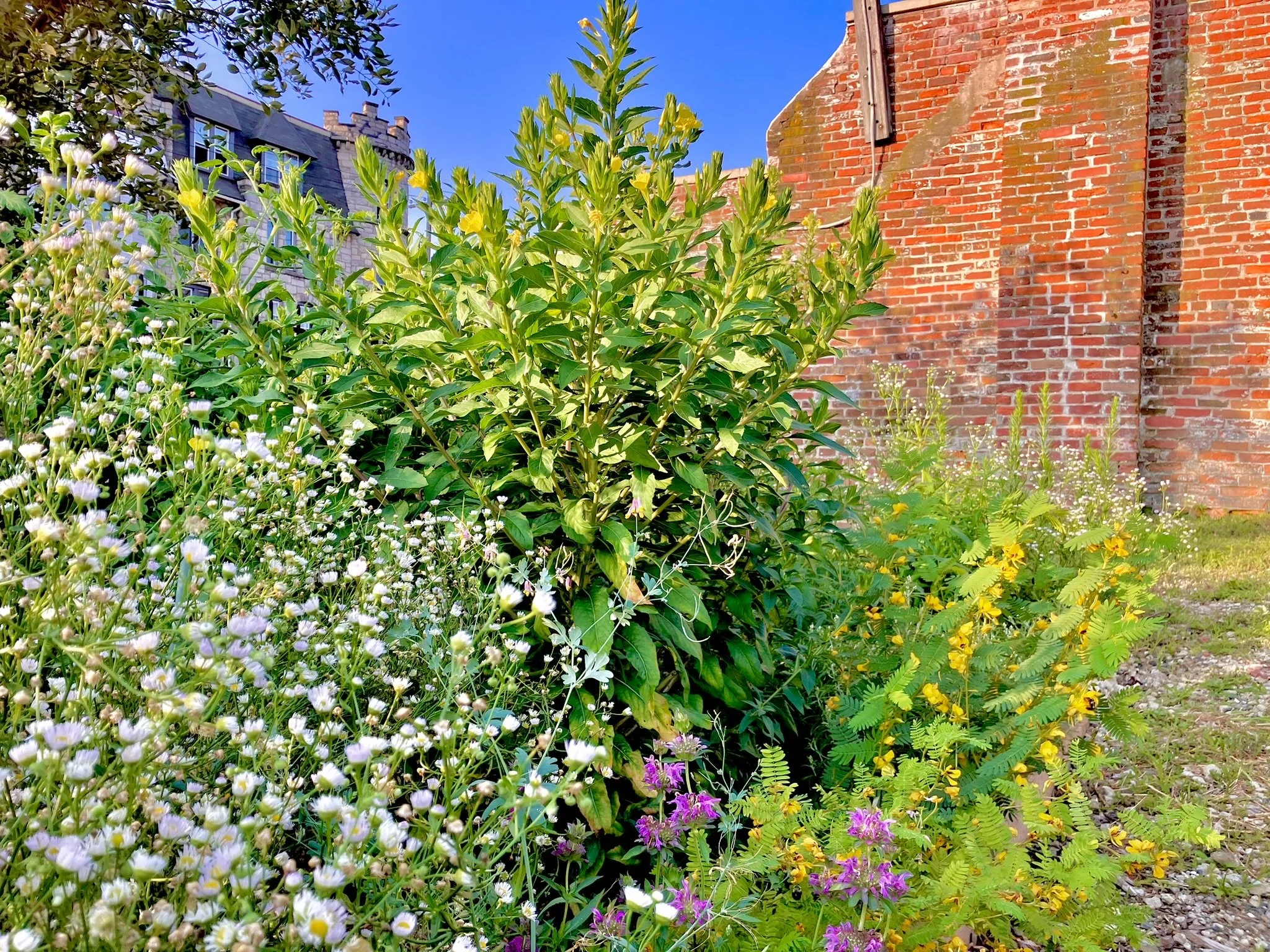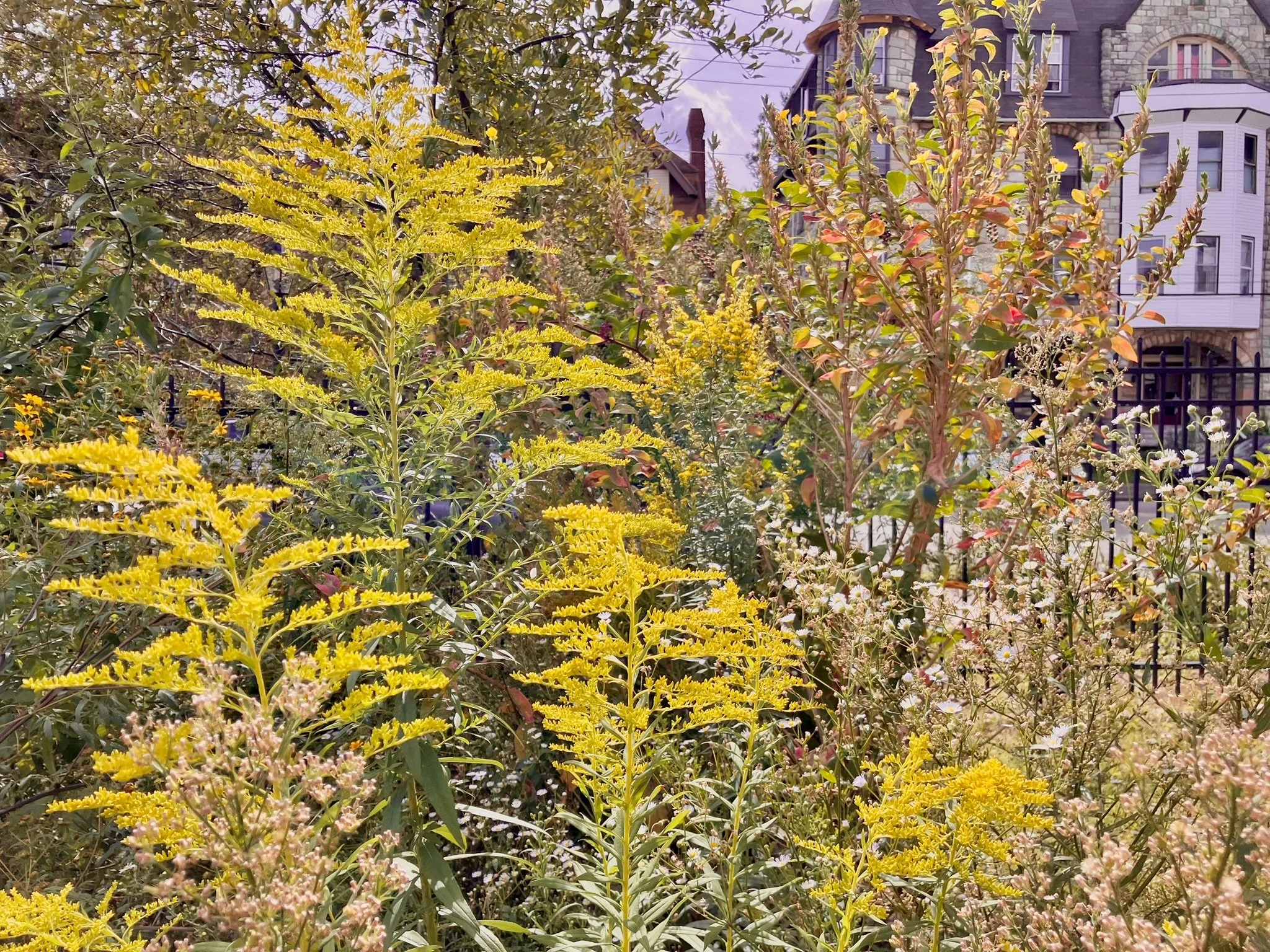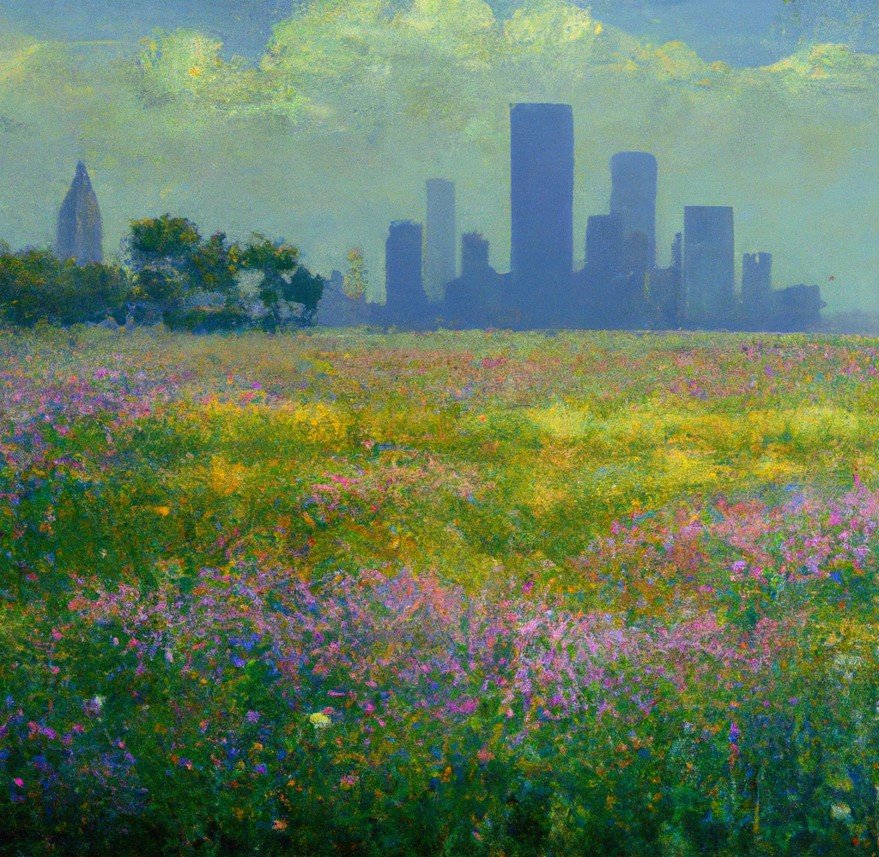
Garden Examples
Some examples of plants native to Philadelphia based on Barton, 1818 (and personally observed currently growing wild in the city)
*Note that late boneset is not included in Barton, 1818, but was likely present just south and west of the city at the time, and has since migrated into Philadelphia
Over the last two seasons, we’ve experimented with creating gardens using only plants native to Philadelphia (based on Barton, 1818) and almost exclusively those that currently grow wild here.
Our goal was to select plants that:
evolved in concert with the development of Philadelphia and are likely to tolerate our local conditions
form the basis of the ecosystems that have evolved from those that pre-dated the development of the city
be highly “sustainable” in terms of their need for inputs (mostly water, labor, and cost)
be able to fend off invasion from non-native invasives
Some of our attempts to use Philadelphia’s native plants to create semi-formal gardens and landscapes
Combining a handful of species to create garden spaces that fall somewhere between wild and formal.
Often transplanting dormant biennials and perennials from vacant lots and abandoned spaces into thin soils composed of rubble and sand.
Experimenting with plant combinations to yield successional blooms and traditional garden structure.
And in particular, using plant species often thought of as weeds, like horseweed, pokeweed, white snakeroot, goldenrods, and common asters, for their often neglected structure, foliage, and color.
While trying to maintain visual interest late into the season.
We’re always happy to provide tours of the gardens in West Philadelphia!
Please contact Seth Budick at sbudick@gmail.com to arrange a tour.
See more examples by following Philadelphia’s Native Plants on Instagram

